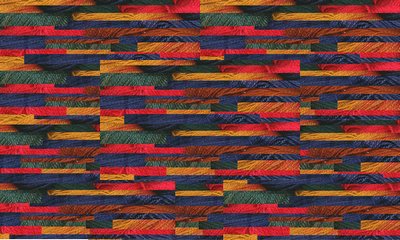No, this is not another maudlin musing about midlife crises, nor have I signed on with the Army (that one's still on the table, but that's another story.) This is about my determination to triumph over two glaring issues on the knitting frontier:
1) Designing for 100% silk yarn. The good stuff. The epitomy of fibre luxury, shimmering on the skein, caressing the skin seductively, I-will-be-such-a-goddess-in-this yarn. Also the topic of much blog anguish and handwringing because of its tendency to slither from sexy drape to sloppy sag shortly after completion of the masterpiece. The most obvious answer is that silk is better woven than handknitted. Sort of like the worming issue with chenille - best just not go there. But that would be Giving Up. Not an option.
I am not about to use up fabulous top quality silk for large swatches (as sensible as that would be), nor do I relish the idea of generating a series of unattractive prototypical garments that will mock me from the closet. Scarves it is. It's difficult to properly assess the garment potential of a given stitch pattern without making a decent sized bit of fabric, and I reckon large rectangles will fit the bill nicely. Furthermore, since it doesn't matter if scarves are saggy, I will have a functional object in each case, regardless.
First up - Sea Silk (laceweight), by Fleece Artist: I have a theory that an all over cable pattern would create enough lateral tension to counteract vertical sag. This will be folded over and seamed into a skinny scarf once it's long enough - maybe with a knitted ruffle down the seam. Depends how much yarn I have. (Which reminds me, I really need a ball winder. 400m of laceweight silk takes an awfully long time to wind by hand.)
I have a theory that an all over cable pattern would create enough lateral tension to counteract vertical sag. This will be folded over and seamed into a skinny scarf once it's long enough - maybe with a knitted ruffle down the seam. Depends how much yarn I have. (Which reminds me, I really need a ball winder. 400m of laceweight silk takes an awfully long time to wind by hand.)
After that, Schaefer Yarns ultrafine (1093 yds in 3.5 oz) laceweight silk in the Harriet Tubman colourway: I want to create a lacy silk fabric that is crisp, not baggy, and its inelasticity makes it considerably less amenable to blocking than wool. The obvious answer, which I have been avoiding because I think knitting is more elegant, is crochet. It needs to be a one piece format because I cannot imagine weaving in a pile of loose ends in such a slippery yarn. Still in the pondering stage.
I want to create a lacy silk fabric that is crisp, not baggy, and its inelasticity makes it considerably less amenable to blocking than wool. The obvious answer, which I have been avoiding because I think knitting is more elegant, is crochet. It needs to be a one piece format because I cannot imagine weaving in a pile of loose ends in such a slippery yarn. Still in the pondering stage.
2) Handpainted yarn. The knitblogs are full of tales of gorgeous (and expensive) skeins that disappoint when knitted up - pooling, striping oddly, or just plain looking muddy in the final analysis. I seem to be in the minority on this one, but by and large I just don't like the brightly "variegated" look. To me it looks over-busy and/or sloppy - I prefer to control strongly contrasting colours with separately coloured yarns. (I do like precisely space dyed sock yarn with distinct stripes.)
Optical mixing is a powerful tool for generating colours of luminous and subtle depth, particularly when analagous colour schemes are utilized (see the above two examples), but it can turn brilliant contrasts into homogenized mud, or at least an altogether different look from the original skein. For example:
 while not unattractive (I've seen some very muddy mixes) is a different animal altogether and quite unlike the impression of the original skein. Toss in some pooling and one might be sorely disappointed.
while not unattractive (I've seen some very muddy mixes) is a different animal altogether and quite unlike the impression of the original skein. Toss in some pooling and one might be sorely disappointed.But what if it were possible to knit it in such a way as to preserve the blocks of colour that made the original so attractive? Narrow strips? Modules? Still thinking.



|